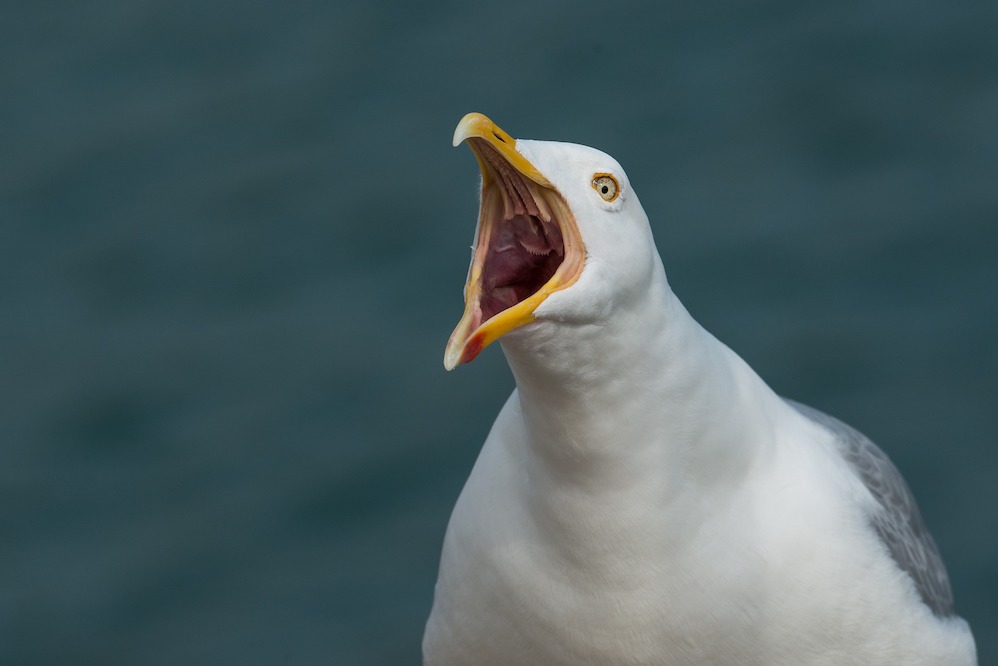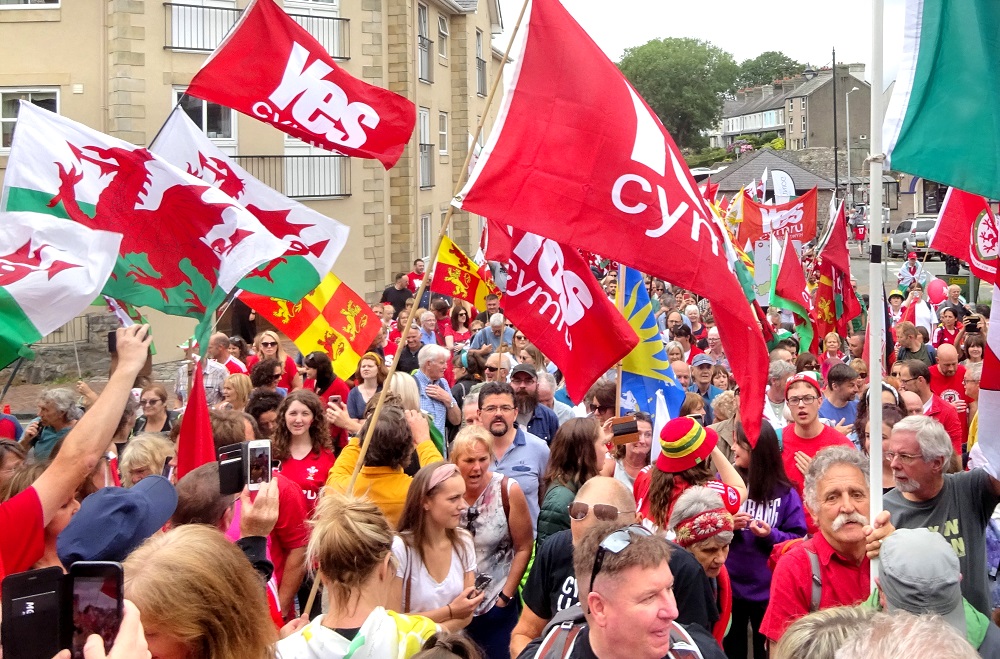Letter from Caernarfon

Ant Evans
If you’re anything like me, when you think about the history of Caernarfon the first thing to spring to mind might be the imposing example of Anglo-Norman architecture on the Maes.
Being from Harlech originally and having grown up in the shadow of the castle there, I’m all too familiar with the castles of Edward I & the conquest of Wales following the death of Llywelyn ap Gruffudd.
Indeed, I was once asked by a local whether the castle had any bearing on my decision to move here.
“Purely coincidental” I replied “There are also Twthills in both towns. That fact also had no bearing on my decision”.
However, as this inquisitive man of Harlech has learned over the course of nearly 5 years living here, there is so much more to the history of Caernarfon than the castle.
What follows is a whistlestop tour of the town’s history, in the hope that you might be encouraged to come and pay a visit to explore the place.
Rebellion
Established almost 2000 years ago, the Segontium Roman fort, located on Llanbeblig Road, was founded by Agricola after he brutally suppressed a rebellion by the Ordovices (is it me, or does this almost mirror the history of the castle being built in the latter years of the 13th century?)
Segontium was linked to Deva (modern day Chester) by the famously straight Roman roads, which linked forts to marching camps, as well as helping to tame this conquered land, granting the Romans easier passage through the countryside and accelerating the pace of exploitation of resources.
The name Segontium lives on in the town today beyond just the fort. Indeed, from my understanding, it gave the town itself its name, “Caer Seiont yn Arfon” meaning “The Fort of Seiont in Arfon”.
Arfon here emphasises the fact that Caernarfon faces Mon, Anglesey, just across the Menai Strait. Over time, the name was shortened to the Caernarfon that we’re more familiar with today. The Seiont River and Segontium Road South also share the name of the Roman fort.
I feel I’d be doing the history of the town a disservice if I fail to pay attention to the castle and town walls.
Built in the aftermath of Edward I’s conquest of Wales upon the defeat of Llywelyn ap Gruffudd, along with castles in Harlech, Conwy and Beaumaris, Edward spent an eye watering total of £80,000 on consolidating his rule over Wales.
The castle and town walls in Caernarfon (built over a period of 47 years) alone cost £25,000.
Uprising
Masonry work on the first phase of the town wall was completed by 1285. Some stone from Segontium Roman fort was reused for the purpose.
The town wall and east gate were damaged during the uprising of Madog ap Llywelyn, the son of the last vassal lord of Meirionnydd Llywelyn ap Maredudd, in 1294. Presumably this is how Hole in the Wall Street received its name.
I do quite enjoy walking along the outside of the town walls (doubtless Edward I would be glad of this Welshman “knowing his place”).
Though, as I’ll demonstrate shortly, my place is wherever I like. Despite my visual impairment, I take pleasure in looking across the Menai Strait during these walks.
Depending on the weather, the views can be strikingly different each time. There can be wonderfully crystal-clear views across the water one day, and scarcely any visibility the next.

Town soundtrack
As anybody who knows Caernarfon is aware, the sound of herring gulls is very much an integral part of the town’s soundtrack.
I’m not just aware of them when I’m exploring the town, of course. Many times I’ve been woken up to a dawn chorus (I am of course, being facetious here) of the gulls’ calls. Especially so in summer.
This reminds me of my time in Australia, when I’d be woken up, without fail, by what can almost be described as the bickering between a group of Murray River Magpies, outside my bedroom window every morning without fail, at 6 am.
Which then begs the question: which do I prefer?
The calls of Caernarfon’s gulls? Or the self-appointed alarm clocks of Port Elliot?
I think the gulls deserve the win here. At least they don’t see fit to wake me up every morning.
As mentioned above, my place is wherever I like. And if you don’t see me exploring the town, one place you’ll be more than likely to find this self-confessed bibliophile within the town walls, is at Palas Print.
This absolutely wonderful bookshop has to be the best I’ve been to (and I’ve visited many bookshops in my 34 years).
They’re celebrating 20 years since opening this year. I very much enjoyed being able to join in the recent celebrations. Without doubt, a day I’m unlikely to forget. If you love reading as much as I do, I strongly suggest paying a visit.
Patagonian connection
Moving beyond the castle and town walls, there are, if you know where to look, plenty of nods to this town’s history. Whilst out for a walk one day, I came across, quite by accident, the (now closed) Engedi chapel, located on New Street.
Next to the gates, you’ll find a plaque noting that this was the location, in 1856, of the initial meeting to discuss establishing a Welsh colony in Patagonia.
Whilst being aware that Lewis Jones, one of the founders of the colony, was from Caernarfon, (indeed, there is a plaque, courtesy of the Caernarfon Civic Society, marking the site of Jones’ birthplace on Pool Street) I had not been aware, prior to stumbling across the chapel, of Caernarfon’s further involvement with the establishment of the colony.
Links between Caernarfon and Patagonia endure to this day. Trelew (the Chubut Valley’s largest settlement, which is twinned with Caernarfon) was named after Lewis Jones, and the bilingual Welsh-Spanish primary school located there, Ysgol yr Hendre, shares its name with a school in the town.

Yachts
Again, during my exploration, I’ve also discovered further civic society plaques, providing yet more glimpses into Caernarfon’s past. The Royal Welsh Yacht Club was established in 1847.
Located at Porth yr Aur since 1854, the structure itself was built around about 1284 as the West Gate of the walled town. The club itself remains active to this day.
Another civic society plaque I’ve found on my walks around the town is the one located outside the Morrisons supermarket. Yes, you read that correctly.
Between 1852 and 1970, until it presumably becoming a victim of the dreaded Beeching Axe, the site was home to Caernarfon train station.
Perhaps, if the Welsh government is serious about encouraging people to opt out of using their cars, it would be an idea to look into re-establishing a rail link in the town?
The latest bit of Caernarfon’s history I’ve looked into courtesy of the civic society, has been that of the old Schoolmasters House, which was occupied by the headmaster of the British School (Board School after 1870).
Located near the town’s bus station, in its latter years, prior to the school relocating in 1973, it was the home of the school caretaker.
Capital loss
Another important milestone in the history of Caernarfon was when it was in the running to become capital of Wales, though ended up losing out to Cardiff in 1955, having gained 11 votes to Cardiff’s 134. How different things may have been had the number of votes been reversed eh?
Whilst Caernarfon might have lost out on becoming a capital, what it gained in 1969 (as with the future Edward II in 1301 and future Edward VIII in 1911) was an investiture. Though, to say that Charles’ investiture in 1969 divided opinion would be, perhaps an understatement.
Although there were cheering crowds on the day, there were those who would have sought to derail events, if you’ll pardon the expression.
Two members of Mudiad Amddiffyn Cymru were killed when a bomb they were carrying exploded before they could plant it on a railway line on which the royal train would run.

Independence march
More recently, in 2019, Caernarfon hosted the second Welsh independence march (the first being in Cardiff). Many thousands joined perhaps the largest march of its kind yet.
Between the crowds, the noise and the various flags and banners, the atmosphere was electric! Easily my favourite memory from living here. Quite the turnaround from 1969, no?
I think it would be fair to say that this inquisitive incomer has only just scratched the surface with regards to the history of Caernarfon. I’m certainly looking forward to learning more.
This is a unique town, with very welcoming people. I’ve certainly been made to feel welcome in the time I’ve been here, which I very much appreciated.
It’s also been very enjoyable to be able to speak Welsh without being looked at as if I have two heads. Bitter sweet in a way, as I’m reminded just how much of a decrease there has been in the amount of Welsh spoken back home in Harlech since my childhood.
If you would like to learn more about Caernarfon’s history, I would encourage you to pay a visit. And remember, there is much more to the town’s history than the castle.
Support our Nation today
For the price of a cup of coffee a month you can help us create an independent, not-for-profit, national news service for the people of Wales, by the people of Wales.





Harlech is in sore need of a local hero, I spent 5 years in the shadow of that vile pile of rocks. A lot of money was recently spent on it while the true gem, Coleg Harlech, was looted and left to rot…